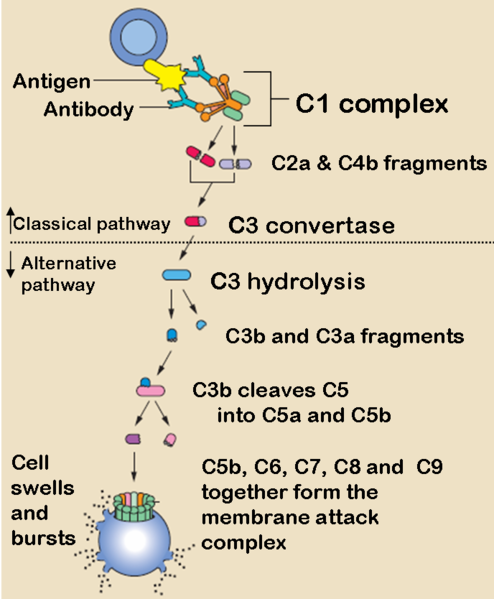Complement components
| The complement
system plays an
important role in both innate and adaptive immunity. The complement activation pathways, the classical, the lectin and the alternative pathway merge through at common intersection C3 that plays a central role in the complement system. C3 activation leads to activation of C5 that initiates lytic pathway involving the formation of the membrane attack complex. The activation pathway leads to the formation of the anaphylatoxins C3a and C5a. The process is controlled by soluble and membrane bound inhibitors such as CD46 and CD55. 


|
 source:
http://www.niaid.nih.gov/publications/ immune/the_immune_system.pdf
|
| Human complement | ||
| Well-characterized antibodies to human complement proteins C3, C3a, C3b, C5, C5a, C5b, C6, C7, C8, human complement receptors C5aR and CD11b. Furthermore unique reagents such as antibodies to C5L2 are available. | ||
| Antibodies | Recombinant protein | ELISA |
| Mouse complement | |
| Antibodies to mouse C1q, C3, C4, C5 and C6 and unique antibodies to C5L2. | |
| Antibodies | Recombinant protein |
| Rat complement | |
| Antibodies to rat C1q, C3, C3a, C3aR, C3b, C4, C5aR, C5L2. | |
| Anticorps | |

